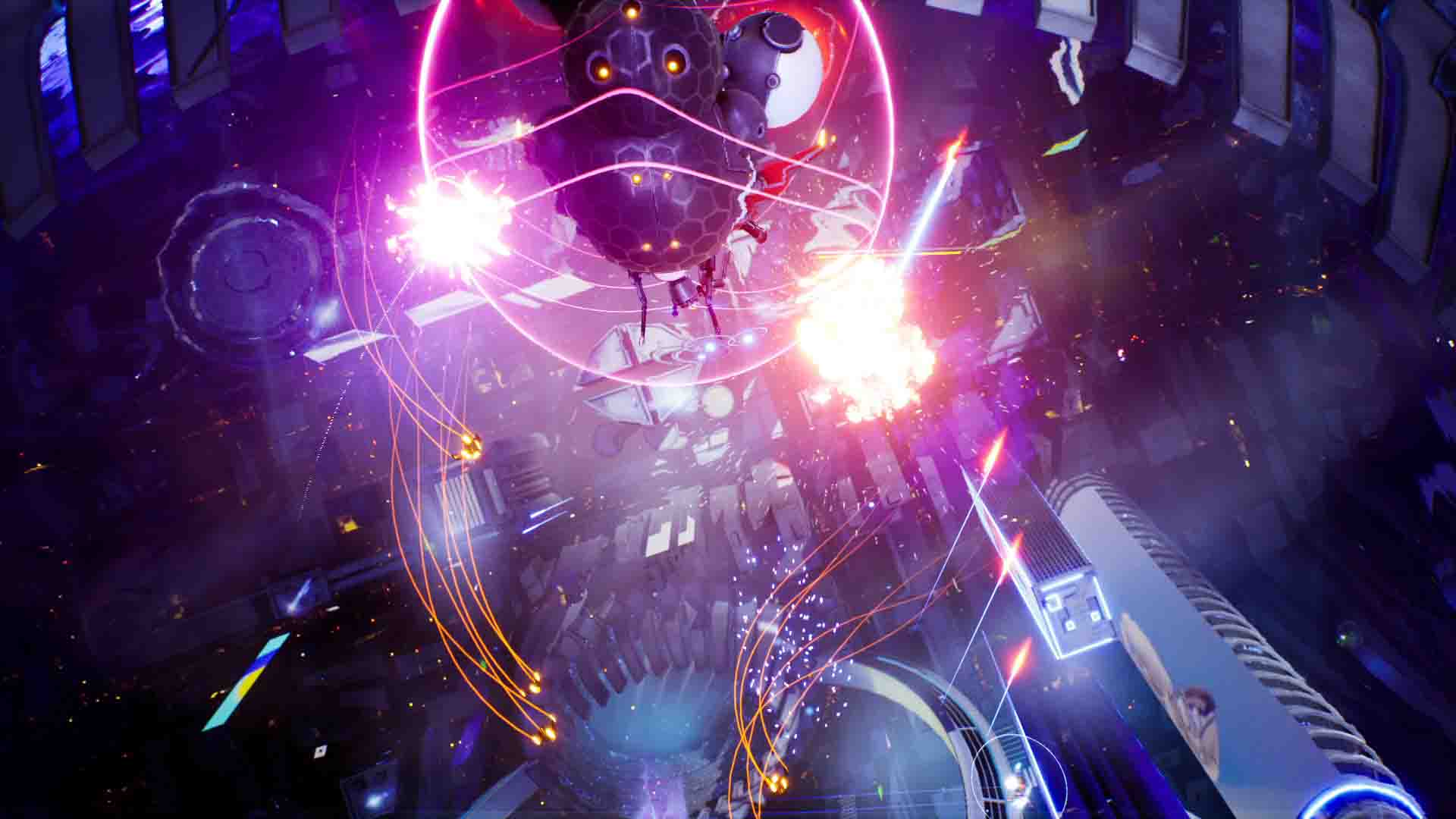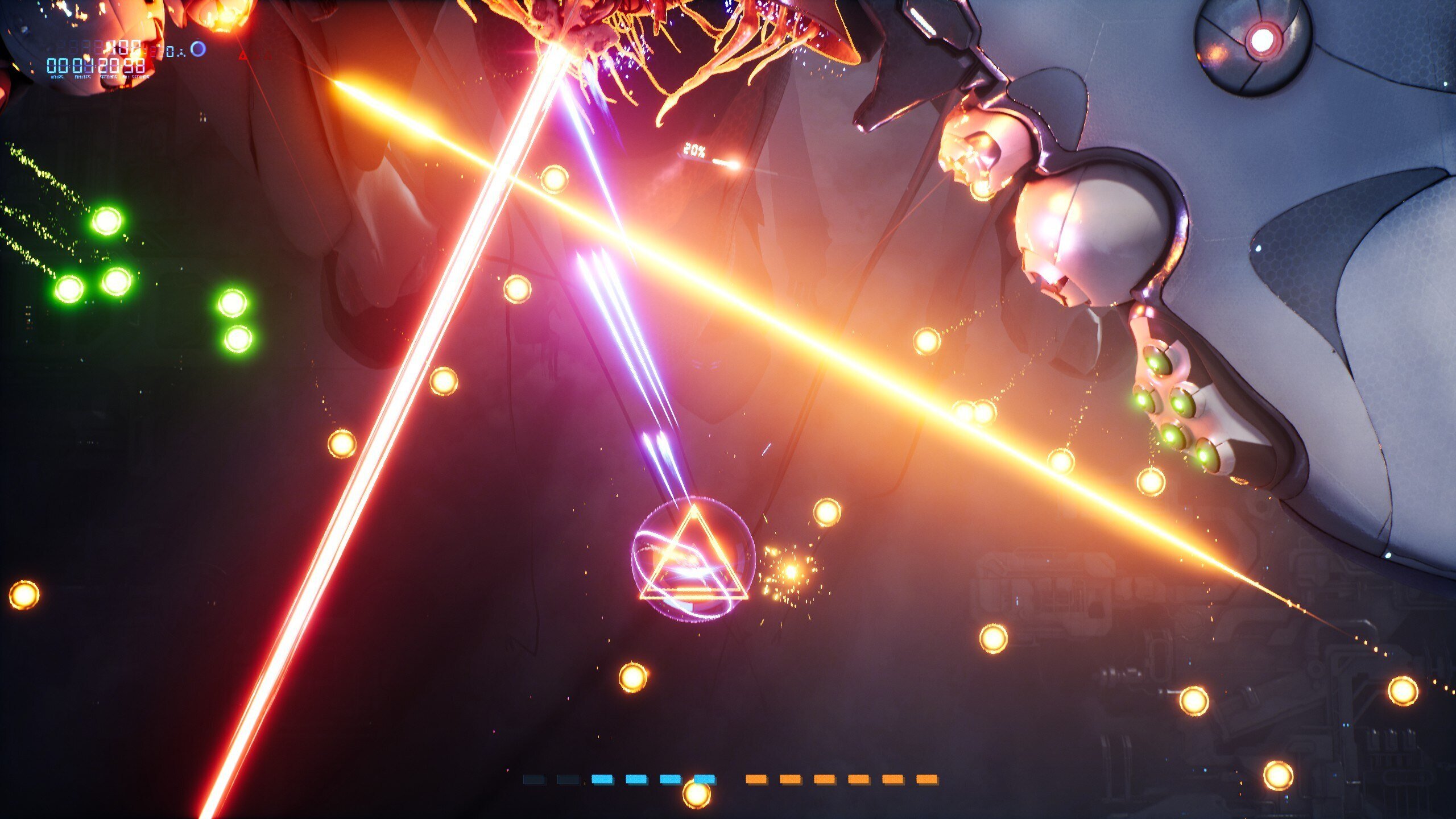Cygni: All Guns Blazing is the best shoot-em-up I’ve played in years, but it’s also far from perfect
A lot has been said about Cyngi: All Guns Blazing, and even before it was officially available I’d started to see people offering opinions that suggested it might be something special. Now that it’s been out for a few weeks, we know a lot more — and in respect to most of its features, Cyngi: All Guns Blazing is definitely pretty cool. With that said though, I’ve been surprised by how many minor missteps it makes, and were the core mechanics not as strong, this could be a very different conversation.
Cyngi: All Guns Blazing is a straight up, fairly traditional vertical shooter that introduces a number of modern twists that put it (for me) into a similar category as the likes of Ikaruga — which is to say that it is in many ways groundbreaking for the genre. Cyngi: All Guns Blazing has an unusually complex control scheme for a shooter, and whilst it can be played with basically just the left stick and the use of both triggers, that’s not how you get the best out of it.

The game can be played at three difficulty levels, with easy introducing three lives (with death costing you any upgrade points gained), medium removing those lives (and adding a lot of enemies and increasing their health) and hard being, well, a nightmare of extremely tough and ridiculously dense enemies. For me, easy is a bit too easy during the majority of each level, spiking frustratingly at some of the bosses, whilst medium is balanced well for the majority of missions, but again spiking at those same bosses. Hard is virtually unplayable — but that’s almost certainly a talent issue.
These difficulty levels matter because those upgrade points I’ve just mentioned are key to progressing through the game. Each newly beaten level will unlock new skills in an upgrade menu, and these can then be bought (often at very great expense) using upgrade points. Playing through the game on easy and then spending your points is one clear way to make medium (and ultimately hard) difficulty levels a lot more palatable.
When playing on easy, it’s almost pointless to continue a level after you die once, because the loss of the upgrade points means that the reward for finishing the level — apart from if you are simply desperate to unlock the next one — is completely lost. The very last boss of the game is punishingly frustrating, but also quite a tepid experience and there’s literally nothing worse than seeing over two hundred upgrade points vanish as a stray bullet takes away your last shield point.

On that note, upgrade points also link to the power and shield level of your ship — The Orca. The Orca begins each level with six shields and six weapon power, and as your shields are lost (one point per hit) the player can use the right bumper to move power from the weapons to the shields. In theory this means you might have up to 12 shields, albeit with each “transfer” from weapons to shields, you’ll be less powerful.
There is another way however, which is that each upgrade point will restore one point of shield energy when it is collected (if there is a gap to fill.) The same is not true of weapon energy, but that can be regenerated manually using the triggers as I mentioned earlier. This system literally means that collecting upgrade points can keep you alive, but the better you do (ie the fewer hits you take) the more upgrade points will go directly into your stash for after the mission (assuming you do survive).

In addition to this, players must also manage their “missiles” which act a bit like a smart bomb, taking down projectiles and enemies when triggered, albeit at the cost of one weapon power. They must also deal with enemies both in the sky (most of them) and on the ground — with the right trigger used for airborne enemies and the left used for ground attacks. Ground attacks can be either auto-targeted or aimed manually, with the latter being used mainly just for carpet bombing the infrequent groups of massed enemy infantry.
All of this still excludes some of the other gameplay features such as bending your shots using the right stick, changing your weapon layout (from one of five preset slots, which must be bought through the upgrade process), managing the drones that follow you (also unlockable) and dealing with several other weapon upgrades that each come with their own nuances.
None of that would be too bad, if Cyngi: All Guns Blazing were even remotely interested in teaching you how to play. There is a tutorial sort of “tucked” at the bottom of the menu, but the game never pushes you towards it, and once within, the tutorial itself is fairly limited and lacks a lot of the nuances of gameplay. Again, this is fine — and in some ways it’s a nice change from the far too laborious tutorials that some games have — but in Cyngi: All Guns Blazing, some of the absolute fundamentals are missed including the upgrade UI, some essential options in the settings menu, and some of the more interesting control features.

On a more positive note and leading to a mixed one, Cyngi: All Guns Blazing happens to look absolutely incredible. The graphics are a mixture of photorealistic and high resolution models, with very clearly defined spaces in the fore and rear ground, plus extremely clear weapon effects. There are certainly sections in certain levels where too much action will obscure your view, but generally I didn’t find these too punishing as the Orca moves through most enemy models without taking damage.
On the less positive side is the sound design. The sound effects are quite good, with solid weapon and explosion effects that work well to create a sense of drama. The music, however, is a completely forgettable orchestral effort that feels quite out of keeping with the action on screen. Cutscenes in between missions are pointless drivel, with the dual focus of a young girl (us) who seems to be out to avenge her father, and the existential threat posed by the recently awakened creatures who seemingly inhabited the titular planet Cyngi before humans — presumably — colonised it. If there were delusions here of a grand narrative about right, wrong and whatever else, it fails to materialise.

In trying to sum up Cyngi: All Guns Blazing, I am forced into using one of several cliches — such as calling it a mixed bag or a mixed experience. However none of those common phrases do it justice, because for the occasional difficulty imbalance or overlong level, I really, really enjoyed Cyngi: All Guns Blazing’s core mechanics, and none of the issues like its music or lack of story detract from what is a superb shooter at heart. I may be overstepping slightly by likening its importance to Ikaruga, but given the lack of quality shooters in recent years, Cyngi: All Guns Blazing is an incredible experience that I intend to keep working through until I have completed it all on the hardest difficulty.
You can find Cyngj: All Guns Blazing on Playstation, Xbox and PC.
Comments are closed.